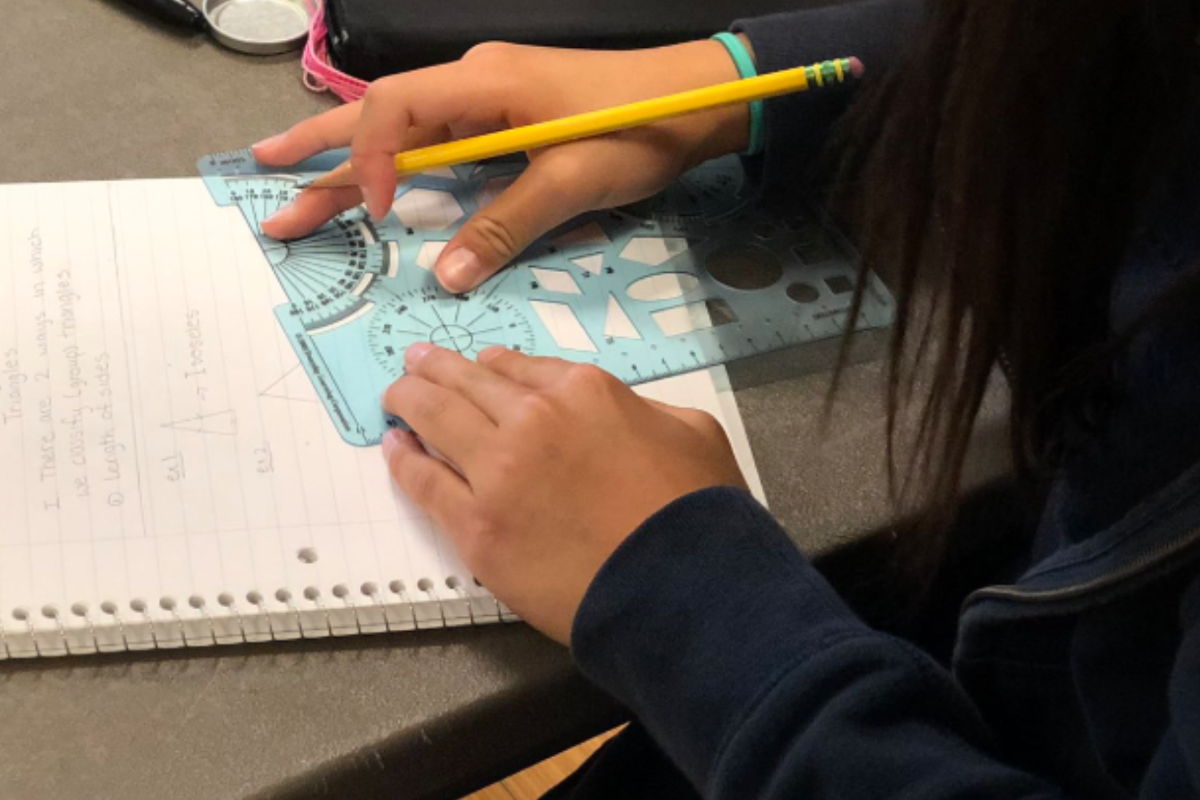4th grade mathematicians are studying Geometry this week, wrapping up the year with in-class and at-home work on angles, lines, shape attributes and more. Early in the week, students used five differently shaped “pattern blocks” to design their own tiling pattern that had at least one line of symmetry. They posted photos of their designs at the front of the room and classmates took turns identifying the line(s) of symmetry they saw. Discussions popped up around questions like, “how many lines of symmetry can there be in one pattern?” Later in the week, students learned to use a protractor to measure angles to the nearest whole-number degree. They defined acute, obtuse, right and straight angles and reasoned about unknown angles using concepts of “supplementary” and “complementary” angles.
One student summarized their process: “Imagine there’s a line that’s 180 [degrees] and there’s an angle that’s maybe an acute and you know it’s 75 degrees. Then you minus 75 from 180 to find the angle that’s next to it. That’d be a supplementary angle.”
Using their Illustrative Mathematics text, they evaluated fictional other students’ claims about shapes, lines, angles and perimeters, agreeing or disagreeing with prompts like Jayden says this image shows an angle, but Lee says it shows a line. What do you think? And, Is it possible for a triangle to have more than one obtuse angle? They also used their understanding of symmetry to help them solve problems involving unknown angles or side lengths.
In Challenge Group, students worked on a large whiteboard with dozens of pieces of tape dividing it into sections, applying their knowledge to help them find and label every angle’s measure on the board.
Students shared discoveries and tips with the group like, “I notice that when two lines intersect in a particular way, opposite angles will be equal.”
And, “the angles all around the intersection of two pieces of tape should add up 360 – because a circle is 360 degrees.”
I notice that when two lines intersect in a particular way, opposite angles will be equal.
Angles they couldn’t deduce, they measured with a protractor, checking their work against each other and against the knowledge that angles along a straight line must sum to 180. We’ve had a great math journey this year and are primed for middle school math!

